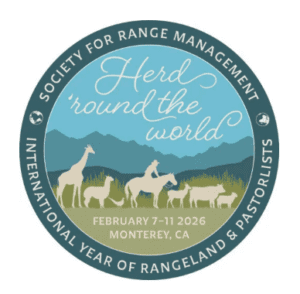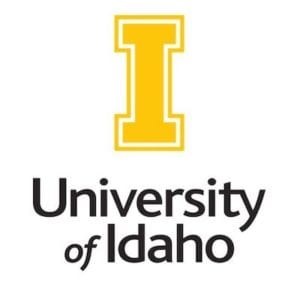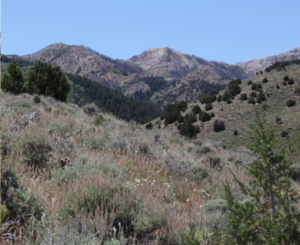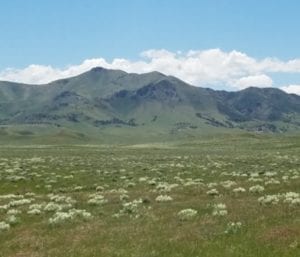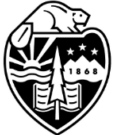Sagebrush
Visit website.
Technical transfer requires significant time, skills, and expertise, which are rarely explicitly taught or supported. Thus, many people engage in technical transfer with limited capacity or resources. Led by the Institute for Natural Resources and the Intermountain West Joint Venture, the Sagebrush Technical Transfer Network seeks to equip those who support others in using technical information with resources, training, and a professional network to support and strengthen their technical transfer work.
Conference website.
Join us in Monterey, California, February 7-11, 2026
The 2026 Society for Range Management annual meeting theme “Herd ’round the World” aims to elevate global awareness about the critical importance of healthy rangelands ecosystems and their contribution to economic prosperity, sustainable livelihoods, and food security throughout the world. “Herd ‘round the World’ celebrates the International Year of Rangelands and Pastoralists. Covering approximately 40% of the Earth’s land surface, rangelands support the livelihoods of hundreds of millions of people through pastoralism, a livestock management system evolved over millennia to work with natural ecosystems. Meeting symposia, presentation and poster sessions, and workshops will highlight how pastoralists worldwide steward these vast landscapes, drawing upon generations of ecological wisdom and adaptive management techniques. Traditional knowledge of pastoralist provides insights to address contemporary challenges including climate change, biodiversity conservation, and sustainable land management.
More information and registration.
Explore the Role of Ranchers in Fire Ecology and Land Management
While most wildfire research in the western U.S. focuses on public lands (e.g., Forest Service, BLM, Park Service), private ranches—especially across the Southern Rockies—play a crucial role in managing biodiversity, supporting rural livelihoods, and mitigating wildfire risk. Ranchers are increasingly engaging in land stewardship and collaborative research to build resilience against extreme wildfires.
About the Western Ranch Management and Ecosystem Stewardship Program (WRMES)
WRMES promotes sustainable ranching practices that support forests, rangelands, wildlife, water resources, and
rural communities in the Intermountain West by providing classes, research, outreach, and a masters degree.
Highlights (4 Weeks):
• Visit 8–10 working ranches representing diverse ecosystems and management approaches.
• Learn strategies directly from ranchers creating both ecological and economic sustainability
More information and registration.
Grass Identification Course
Thursday-Friday, June 12-13, 2025
Rinker Rock Creek Ranch
Rock Creek Road, Blaine County (near Hailey, Idaho)
Rinker Rock Creek Ranch will be offering a two-day field course taught by Justin Trujillo (author of A Field Guide to Grasses and Grass-like Plants of Idaho) that will focus on learning the basic morphology of grasses and grass-like plants. This course will cover identification of mostly cool- and some warm-season grasses common in the sagebrush steppe. Students will receive a plant press, hand lens, and identification book for the course fee.
This course does not include meals; those enrolled should plan to bring food/snacks and water into the field each day.
Camping will not be available on the ranch. Here are some campsites nearby:
- Picabo Angler RV Park
- Hayspur Fish Hatchery Campground
- Stanton Crossing Campground
- Silver Creek West
- Silver Creek East
This course is eligible for 6 CEU credits through the Society for Range Management.
Register early – the course is limited to 20 participants.
Questions? Please email Justin Trujillo (jjtrujillo2003@gmail.com) or Dr. Tracey Johnson (traceyj@uidaho.edu)
Webinar recording (49:44).
Matt Reeves, (Fuel and Forage), US Forest Service, Rocky Mountain Research Station
Webinar recording.
Scott Bergen, Senior Wildlife Research Biologist, Idaho Department of Fish and Game
When: May 28th – 30th, 2025
Where: Prineville, Oregon
Board meeting, presentations and first night social: 4-H Clover Building, 502 SE Lynn Blvd, Prineville, OR 97754
Cost: Regular Registration (until May 14th): $75; Late Registration (after May 14th): $85; Student Registration: $25; May 28 only – social and light dinner/appetizers, evening presentation: $30
Questions: Contact Andy Neary, Central Oregon Chapter
This three-day short course covers the unique taxonomy associated with the Sunflower Family, Asteraceae. Basic terminology, dissection skills, and use of a key are critical elements of this class. We will cover not only how to identify sunflowers, but how to collect and press them for future reference or for the purpose of mailing to others for identification or verification. You can anticipate seeing about 60 different sunflower genera. This class is for participants with beginner through intermediate skills.
Instructor: Arnold (Jerry) Tiehm, M.S, Great Basin Flora Specialist
atiehm@unr.edu
Cost: $240 for non-students, $120 for students
Fees for optional credit units are paid separately when you enroll with UNR for Spring or Fall semester.
The simplest method for payment is to bring a check to class made out to Board of Regents. Contact the instructor for other payment options.
Registration: Sign up by emailing the instructor at atiehm@unr.edu
Timing: Class will be July 8-10, 2025
Additional details: Class size is limited to 30 participants.
Class will be from 8:00 am-12:00 pm, one hour lunch break, 1 pm-5 pm daily. It will be held in room 300G of Fleischman Agriculture at UNR. Hot water and some coffee and tea will be available in the classroom. This class may be taken for 1 unit of optional credit during either semester. Let the instructor know if you want to receive credit so you can obtain a class number. You must also pay the separate credit fees with UNR.
The workshop will be May 7th – 8th 8:00am-5:30 pm. Registration is FREE, so please come prepared with lunch, snacks, water and layers. In additional comments, please indicate anything we need to know (e.g., arriving late on Monday at 8:30am, need information for camping on site, accommodations related to a disability, uncertainty regarding federal travel restrictions etc.) Reach out to Vanessa (Vanessa.Schroeder@oregonstate.edu) with any other questions or concerns. Note: We are limiting to 40 people. We will have a waitlist. If you are no longer able to attend please email Vanessa so we can let others into the course. You will not immediately receive confirmation of the registration, but we will send out confirmations closer to the course. If you are waitlisted we will contact you to let you know where you are on the waitlist and if you have been moved into the course.
Webinar recording (1:00:34)
The Sagebrush Conservation Design (SCD) is a tool to identify intact sagebrush areas and address the largest threats to the ecosystem. The SCD focuses on first protecting intact and functioning sagebrush ecosystems, called Core Sagebrush Areas, then works outward toward more degraded areas (i.e., “Defend the Core”). The premise behind the Defend the Core approach is simple: focus resources first on preventative actions that retain ecosystem services in Core Sagebrush Areas because they are more cost-effective and more likely to be successful. The November 2024 special issue of Rangeland Ecology and Management is dedicated to applying the SCD to improve conservation outcomes across the sagebrush biome in the face of pervasive ecosystem threats. This special issue provides new science and real-world examples of how we can implement the SCD to save a biome. The overarching themes are: 1) Business-As-Usual Won’t Save the Sagebrush Sea, 2) Better Spatial Targeting Can Improve Outcomes, 3) Conservation Planning is Needed to Develop Realistic Business Plans, 4) Targeted Ecosystem Management: Monitoring Shows Managing for Sagebrush Ecological Integrity is Working, 5) Maintaining Sagebrush Ecological Integrity is Ecologically Relevant, and 6) There is Only Hope if We Manage Change. The collective articles show that there is no shared plan to save the biome, yet a business plan for the biome could ensure realistic goals. The sagebrush biome still has vast expanses of open spaces with high ecological integrity at a scale that is rare in other ecological systems within the lower 48 states. If we focus on the common ground of the main drivers of ecosystem change, implementing the SCD and Defending the Core are viable strategies to help save a biome.



